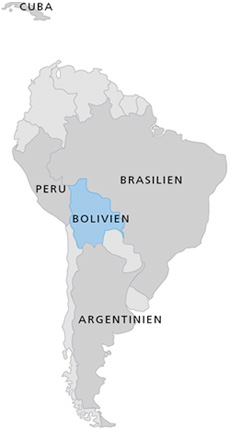EBM MASA Community, Hilfe für Lateinamerika, Pastor Carlos Waldow

Bolivia
Bolivia is one of the Andean states, borders Peru and Chile to the west, Argentina to the south and Paraguay and Brazil to the east. The scenery includes all of the following: Snow-covered mountains reaching altitudes of 5,000-6,000 m, Lake Titicaca at 4,000 m, which is the world’s highest freshwater and navigable lake, Altiplano, an immense plateau at 3,500-4,000 m above sea level and, last but not least, a huge tropical forest in the Plain, stretching as far as Brazil.
Religious background
With the Spanish Conquista (Conquest), starting in the 16th century, the country became Catholic. Traditional Indian religious beliefs were embraced and adapted to Christianity. Today, 90% of the population are nominally Catholic, with Amerindian cults still influencing the beliefs of the rural population. Only in the 19th century were there evangelical missionary efforts by various denominations. In the 1990s, Canadian missionaries crossed Lake Titicaca and launched a mission initiative, which developed into the Unión Bautista Boliviana (UBB), our partnering union.
The rugged region in North Potosí is inhabited by several Quechua communities, partly hostile to one another. Their lives are
influenced by ancient customs dating back to Inca times, such as the Tinku festival, which invariably ends in alcohol-fuelled violence. The return to the old Inca customs also meets with political support.
Projects in Bolivia:
